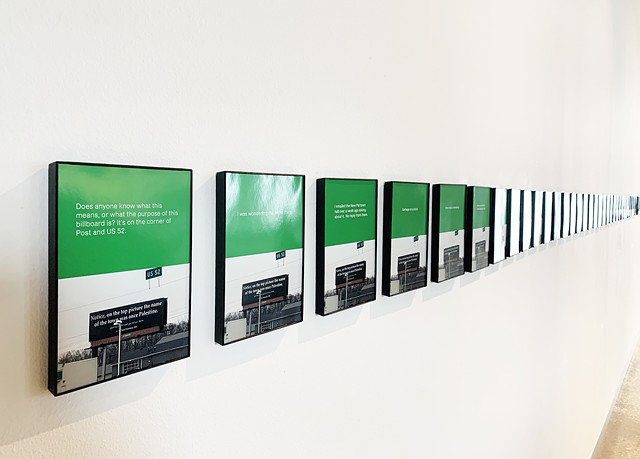COVID-19
What do we do with art that is cruel? Two recent projects by Qais Assali, closed a day after they opened in the Core Program exhibition at the MFA Houston, are undeniably timely, critically incisive, skillfully produced, edgily witty—and, for me at least, unsettlingly exploitative of others. Assali, who was raised in Palestine and the UAE, presents the results of a billboard he mounted in New Palestine, IN, which with its inclusion of Arabic script and reference to a town of the same name in Ohio sparked a lively discussion thread on Nextdoor. The content isn’t hard to imagine—confusion, local and world history, tax dollars, anti-Semitism, xenophobia, etc.—but it’s riveting and revelatory nonetheless. Assali cleverly makes it part of his artwork, an appropriative strategy he fully embraces in “if you Like you can show my works in galleries.” Bizarrely entrusted by a friend with the decade-old submissions of an Iranian artist to the Art Chicago fair, Assali conjures a one-way relationship with him, copies his paintings, drawings and video, and even follows him online, ultimately presenting these and other related elements to reveal layers of Orientalism, eroticism, egotism and geopolitical ignorance. Is any of this really, truly ethical? Perhaps the art that lays bare the unscrupulousness of the world can’t help but be unkind, too.
—Lori Waxman 2020-08-21 9:30 AM
